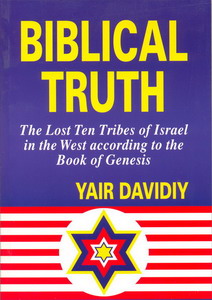|
"Shoshana Yaacov" |
|
"Shoshana Yaacov" |
|
Brit-Am Discussion Group |
Contents by Subject |
Research Revelation Reconciliation Contribute |
Site Map Contents in Alphabetical Order |
This Site |
|

|
The Lost Ten Tribes of Israel according to the Book of Genesis Biblical Prophecy Predicted that the Lost Tribes of Israel would be found amongst Western Nations. Biblical Verses analysed in the light of the Hebrew language, Rabbinical Commentary, and Historical Reality. A valuable educational, inspirational, and enjoyable work |
"Gwrgan(r)t....directed them [Bartholomew and company]..to go to Ireland, which at that time lay waste and uninhabited. ...and there they settled..; and there their descendants are to this day in Ireland.""Bartholomew" or "Partholomew" is also mentioned in Irish accounts as leader of one of the first groups who settled in Ireland. In the account of Roberts above it says expressly that "Israel (Palestine)" was "their original country".
"He Bartholome .. had his name from a river of Spain called Eirinnal, on the banks of which they had lived.....they had arrived from Israel (Palestine) their original country, and ...their ancestors dwelt in a retired part of Spain, near Eirnia, from whence the Spaniards drove them to sea.. "
In 1581 Vincenzio Galilei (father of the astronomer, Galileo
Galilei) wrote that the Irish believed themselves descended from David, King of
Israel, and that was why they used a harp as their symbol.
"It is stated in very old copies of The Book of Invasions and other ancient documents that it was the Mosaic law that the Milesians brought into Errin at their coming; that it had been learned and received from Moses in Egypt by Cae Cain Beathach, who was himself an Israelite, who had been sent into Egypt to learn the language of that country by the great master Fenius Farsaith, from whom the Milesian brothers, who conquered Errin, are recorded to have been the twenty second generation in descent; and it is stated in the preface to Seanchas Mord [i.e. "The Great Tradition", the central compilation of the ancient Irish Law] that this was the law of Errin at the time of the coming of St.Patrick".
[HYMAN, LOUIS. "The Jews of Ireland", Jerusalem, Israel, 1972 p.1].
| PREVIOUS ISSUES |